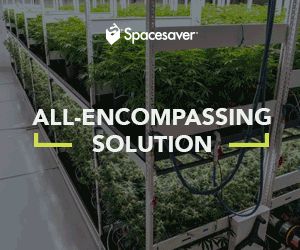Basic Indoor Grow Room Setup
Growers can face some daunting challenges when setting up an indoor grow room. For those new to the field or those looking to expand, the need to create a stable growing environment while also managing costs, security concerns, and compliance with local laws and regulations can make setting up a grow room seem impossible. However, with careful planning, a step-by-step approach, and consultation with industry experts, you can create a grow room that operates smoothly for successful cultivation.
Choose the Right Location
The first step in setting up an industrial cannabis grow room is choosing the right location. You need to find a space that is large enough to accommodate all the equipment and plants you want to grow. Keep in mind that you can maximize the square footage of available real estate by planning a vertical grow room rather than confining your plants to the ground level.
The location must have adequate access to power, water and ventilation so you can set up your equipment without additional overhead costs. While you don’t necessarily need to be located on a main road, easy access for deliveries and shipments will keep your grow room running smoothly.
Security is another important consideration. A good location should be secure enough to prevent theft and vandalism, or should be set up in a way that a security system is easy to install and maintain. Grow rooms house a great deal of expensive equipment in addition to the plants themselves, so the safety of your assets should be a factor in the space you choose.
Understand Local Regulations
The cannabis industry is highly regulated, and growers must comply with local and state regulations regarding cannabis cultivation. Before setting up the grow room, it is essential to research and understand the local regulations and zoning requirements for cannabis cultivation.
This includes obtaining necessary licenses, permits, and approvals from local and state authorities. It is also important to ensure that the grow room meets all safety and security requirements. Some local regulations spell out these requirements in detail, including items like secure fencing, alarms, and video surveillance that would need to be included in your startup budget.
Design the Layout
The layout of your grow room affects the scale of your operation, the strains you are able to grow, and the safety of your staff. You must determine the size and shape of the room, the number of plants you want to grow, and the type of equipment you will need.
The layout also should be designed to maximize space and optimize plant growth. For large-scale operations, a vertical grow room is the best way to propagate large numbers of plants in limited spaces. Rather than a single layer of plants close to the floor, vertical grow rooms include tiers of plants arranged in rows from floor to ceiling. Growers can care for and monitor the plants by incorporating special equipment that is designed for vertical grow room spaces.
In any layout, the plants should be arranged in a way that allows for easy access and proper lighting. A traditional row and aisle setup is an easy and affordable way to allow staff to access plants to harvest and care for them while ensuring adequate lighting and air flow. Mobile shelving can accomplish the same goals without the need for uniform aisles, allowing more floor space to be devoted to plant growth.
Install the Equipment
The equipment you need will depend on your grow room’s size and type. Basic equipment includes:
Lighting:
Unless your space is outdoors or in a greenhouse structure (both of which rely on sunlight) you will need to install grow lights that provide the right spectrum of light for the plants. LED grow lights are the most popular option because they are energy-efficient and produce less heat than other types of grow lights. LED lights also have been proven to produce fuller, healthier plants than other lighting strategies.
Ventilation:
Proper ventilation is critical for maintaining the right temperature and humidity levels in the grow room. You will need fans, air filters, and ductwork to ensure adequate air circulation.
Irrigation:
You will need to install an irrigation system to provide plants with adequate water and nutrients. Choose from various types of irrigation systems, including drip irrigation, flood and drain, and aeroponics.
Monitoring Systems:
It is important to monitor the temperature, humidity, CO2 levels, and other environmental factors in the grow room for optimal growing conditions for your plants. Monitoring systems help keep track of these variables and allow you to make adjustments as needed.
Consult with Experts
As an industry leader in storage solutions, SSI offers customized solutions for cannabis grow rooms, including proven expertise in vertical grow rooms and mobile storage strategies.
Contact SSI today to learn how we can help.
Tags:
Related Posts
- How to Choose the Best Warehouse Racking System ( October 28, 2024 )
- Ideal Lab Casework Solutions ( October 28, 2024 )
- Optimizing Commercial Office Storage for Efficiency ( September 13, 2024 )
- Choosing the Right Museum Storage Systems ( September 13, 2024 )
- Police Gear Storage Solutions ( August 26, 2024 )
- 5 Clinical Storage Ideas to Improve Patient Experience ( August 26, 2024 )
- When to Use Modular Casework Systems ( July 17, 2024 )
- Multiply Your Usable Space With Sliding Lateral Shelving Systems ( July 17, 2024 )
- How Office Shelving and Storage Go Hand in Hand ( June 17, 2024 )
- How to Create Extra Storage Space for a Corporate Office ( June 17, 2024 )


